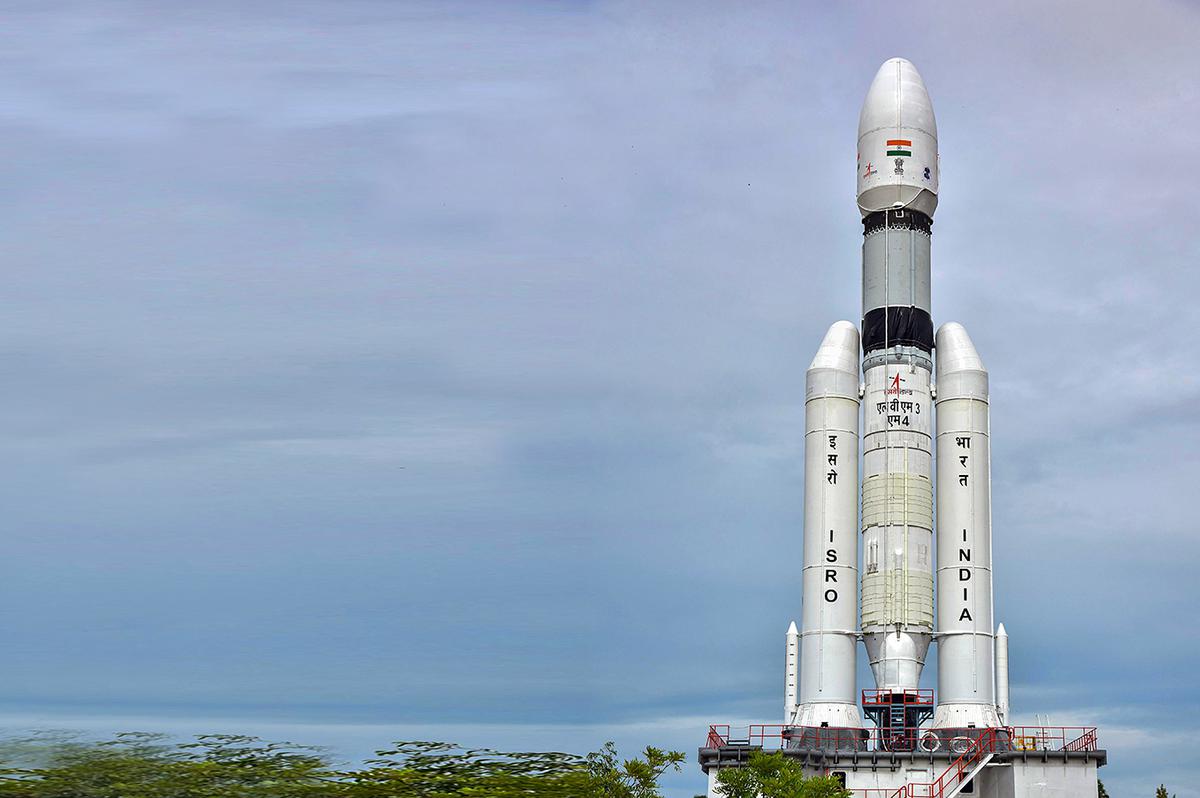
ISRO conducts 24-hour ‘launch rehearsal’ for Chandrayaan-3 mission – Details here
ISRO has been actively working on Chandrayaan-3 as a planned follow-on mission to its predecessor, Chandrayaan-2. It aims to build upon the achievements and lessons learned from Chandrayaan-2, with a specific focus on demonstrating the capability of safe landing and rover operations on the lunar surface.
The mission configuration of Chandrayaan-3 consists of three main components: the propulsion module, the lander module, and the rover. These components are equipped with advanced technologies necessary for interplanetary missions. The propulsion module provides the thrust and propulsion required to propel the spacecraft towards the Moon.

The lander module is designed to autonomously navigate and land on the lunar surface. It is equipped with various scientific instruments to study the lunar environment and gather data. Conversely, the rover is intended to traverse the lunar surface, conducting experiments and collecting valuable data about the Moon’s geology, composition, and potential resources.
Chandrayaan-3 represents India’s continued commitment to lunar exploration and scientific research. By showcasing capabilities in safe landing and rover operations, it aims to contribute to our understanding of the Moon and pave the way for future missions and potential human exploration. The development of Chandrayaan-3 as a follow-up mission to the Chandrayaan-2 lunar mission. Chandrayaan-3 aims to explore the Moon’s surface further and enhance our understanding of lunar geology and resources.
ISRO is known for its meticulous approach to mission planning and preparation. They will likely conduct extensive rehearsals and testing to ensure the success of Chandrayaan-3. These rehearsals simulate the launch process and help identify any potential issues or areas for improvement before the actual launch.
As part of the Chandrayaan-3 mission, the propulsion module will play a crucial role in carrying the lander and rover configuration to the lunar orbit. Once in lunar orbit, the lander will execute a safe and controlled descent to achieve a soft landing on the lunar surface. This delicate manoeuvre aims to ensure a successful landing and the preservation of the lander and rover’s integrity.
Upon landing, the rover will commence its exploration mission, showcasing its ability to traverse the challenging terrain of the Moon. The rover is equipped with advanced scientific instruments that will enable it to conduct in-situ experiments, collecting valuable data about the lunar environment, geology, and composition.
One notable payload onboard the Chandrayaan-3 propulsion module is the Spectro-polarimetry of Habitable Planet Earth (SHAPE) instrument. SHAPE is specifically designed to study Earth’s spectral and polarimetric measurements from the unique vantage point of the lunar orbit. By observing Earth from the Moon, SHAPE aims to provide valuable insights into our planet’s atmospheric composition, climate patterns, and potentially even signs of life.
The data gathered by SHAPE will contribute to our understanding of Earth’s environment and help refine climate models and atmospheric studies. This information can be instrumental in monitoring climate change, studying the health of our planet, and enhancing our knowledge of habitable conditions.
Chandrayaan-3’s inclusion of the SHAPE instrument demonstrates India’s commitment to exploring the Moon and leveraging lunar missions for Earth observation and scientific research. By leveraging the vantage point of the Moon, the mission expands our capabilities to study and monitor our home planet in unique and insightful ways.ISRO’s Chandrayaan-3 mission holds significant importance for India’s space exploration efforts. It reflects the space agency’s commitment to pushing boundaries and expanding our understanding of the Moon and beyond.
One notable aspect of Chandrayaan-3 is ISRO’s design adoption of a failure-based approach. Learning from the challenges encountered during the Chandrayaan-2 mission, ISRO aims to mitigate risks and increase the chances of mission success. This approach involves a thorough analysis of previous mission outcomes and identifying areas of improvement to enhance the mission’s reliability and effectiveness.

By incorporating lessons learned from previous missions, ISRO can fine-tune the design and operations of Chandrayaan-3 to address any potential shortcomings. This approach demonstrates the agency’s dedication to continuous improvement and its commitment to delivering successful missions.
The Chandrayaan-3 mission represents a significant step forward for India’s space exploration program. ISRO aims to enhance our understanding of the Moon’s geology, composition, and potential resources by demonstrating the capability of safe landing and rover operations on the lunar surface. This knowledge can contribute to future scientific research and space exploration endeavours and potentially pave the way for human missions to the Moon.
Moreover, Chandrayaan-3 showcases India’s technological capabilities and position as a prominent player in the global space sector. The mission involves cutting-edge technologies and scientific instruments, highlighting the country’s advancements in space exploration and its contributions to the international scientific community.
Overall, Chandrayaan-3 represents a significant milestone in India’s space exploration journey. By pushing boundaries, adopting a failure-based approach, and expanding our understanding of the Moon, ISRO continues to make strides in its pursuit of scientific knowledge and technological advancements in space exploration.
As the launch date of Chandrayaan-3 draws near, there is a palpable sense of anticipation among the scientific community and space enthusiasts. The mission promises discoveries and advancements in lunar exploration, sparking excitement and curiosity about what lies ahead.
The success of Chandrayaan-3 will contribute to our scientific knowledge of the Moon and reinforce India’s position as a prominent player in space exploration. It showcases the country’s capabilities in designing, developing, and executing complex missions in the challenging realm of outer space.
The impact of Chandrayaan-3 extends beyond scientific endeavours. Its achievements and breakthroughs have the potential to inspire future generations, igniting a passion for space exploration and technology. By witnessing India’s achievements in space, young minds are encouraged to dream big and pursue careers in STEM fields, ultimately contributing to the growth and development of the nation’s scientific and technological landscape.

The mission’s success would also foster international collaboration and space exploration partnerships. It would signify India’s contributions to global scientific endeavours and encourage cooperation to advance our understanding of the Moon and beyond.
Furthermore, Chandrayaan-3 is a testament to human curiosity and the unending quest for knowledge. It represents our collective ambition to explore the unknown, unravel mysteries, and expand the boundaries of human understanding.
As the journey to the Moon for Chandrayaan-3 nears, the anticipation and enthusiasm among the scientific community, space enthusiasts, and the general public continue to grow. The mission holds the potential to significantly contribute to lunar exploration, inspire future generations, and strengthen India’s position in space exploration.




